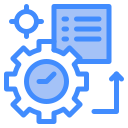Strategies for Automating Business Processes: Practical Paths to Momentum
Chosen theme: Strategies for Automating Business Processes. Welcome to a friendly, no-hype guide for turning messy workflows into repeatable wins. Expect pragmatic tips, real anecdotes, and clear steps you can try this week. If this resonates, subscribe and share your own wins and lessons—your story may inspire someone else’s breakthrough.
Map Before You Automate
Combine stakeholder interviews, screen recordings, and process mining to capture the truth behind your workflows. In one logistics firm, this uncovered duplicate data entry across three systems, clarifying exactly where automation could help first.
Map Before You Automate
Score candidates by volume, variability, error rate, and business impact. A finance team chose invoicing over expense reports because late payments cost more than clerical frustration, producing faster wins and stronger executive support.


Choosing the Right Automation Stack
RPA, BPA, and iPaaS—when each shines
Use RPA for repetitive UI tasks, BPA suites for orchestrated workflows, and iPaaS for robust integrations. Match each to process complexity and data gravity, avoiding tool sprawl and fragile handoffs.
Low-code with guardrails
Empower business builders with reusable components, version control, and automated testing. A retail team cut build time in half by standardizing connectors and templates, while a small platform committee kept quality high.
Security, privacy, and compliance by design
Bake in role-based access, audit trails, and data minimization. A banking pilot earned rapid approval by mapping controls to regulations upfront. Want a checklist? Subscribe for our monthly governance playbook.
Designing Human-Centered Automation
Place review points where risk is highest or ambiguity spikes. Use confidence thresholds to route decisions. Agents become coaches to the system, catching edge cases and teaching models to improve safely.
Design for the weird day, not the ideal one. Clear escalation paths, detailed logs, and rapid rollback protect trust. Real resilience comes from practicing failure scenarios before they reach customers.
Blend short videos, step-by-step guides, and office hours. A nonprofit doubled adoption by pairing champions with novices for two weeks. Share your favorite training tip below so others can apply it tomorrow.


Start small, measure fast
Pick a narrow process, ship in weeks, and publish results. Quick wins build appetite and clarify patterns. Use post-implementation reviews to decide whether to scale, refactor, or retire the solution.
Reusable components and templates
Create shared libraries for authentication, logging, and error handling. Teams ship faster when they assemble rather than invent. A simple intake form ensured every new bot met baseline quality standards.
A federated operating model
Centralize governance, decentralize build. Business units own outcomes with support from a lightweight center of excellence. Comment if you’ve tried this—your example may help others avoid overcentralization.
Measuring What Matters
Operational KPIs that tell the truth
Track cycle time, first-time-right rate, queue age, and exception volume. Pair with qualitative insights from frontline staff. Real improvement shows in fewer escalations and faster, calmer workdays.
Financial outcomes beyond ROI
Measure cost avoidance, revenue acceleration, and working capital impacts. A procurement automation trimmed approval lags, unlocking early-payment discounts that dwarfed pure headcount savings.
Customer and employee experience metrics
Monitor NPS, CSAT, and employee pulse scores alongside throughput. Ask two questions monthly: where did automation help, and where did it hinder? Share your survey questions to help peers refine theirs.

Process mining and task mining synergy
Use process mining for end-to-end flow and task mining for keystroke detail. Together they reveal bottlenecks and automation anchors, guiding investments with evidence rather than opinions.

AI models with governance
Establish data lineage, prompt libraries, and evaluation suites. Track drift and performance by scenario. Treat AI like a product with stakeholders, not a toy—especially where decisions affect real people.

Ethical automation choices
Design for transparency, appeal paths, and bias checks. A city agency gained public trust by publishing decision criteria and inviting feedback. Subscribe to get our ethical checklist and implementation examples.
Sustaining Momentum: Continuous Improvement
Hold brief, recurring retros to review metrics, pain points, and candidate processes. Consistency beats intensity. The best ideas often come from the quietest voices—make space for them to surface.

